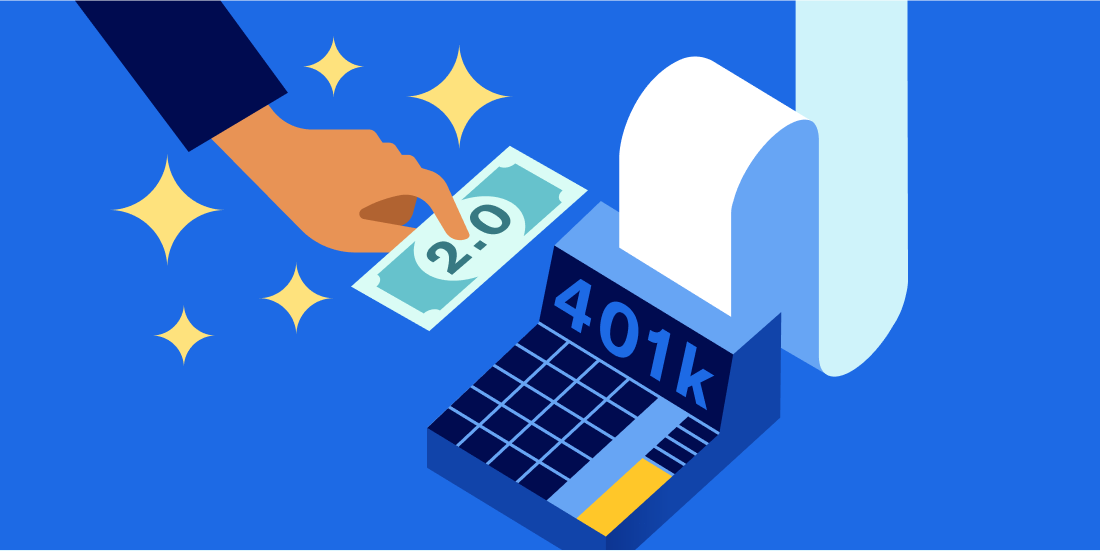How tax credits can make offering a 401(k) affordable
See how new tax credits under the SECURE 2.0 Act could help with a new 401(k) plan’s implementation costs.

After the passing of the SECURE 2.0 Act, CNBC published an article titled, “There may never be a better time to create a retirement plan.” The article largely focused on the increased tax credits smaller businesses can receive under the Act.
These tax credits may amount to sizable savings for smaller employers looking to start a 401(k) plan. For that reason, we tend to agree with CNBC: this really may be the best time there has ever been to start a 401(k).
What are the SECURE 401(k) tax credits?
For businesses with 100 or fewer employees, there are three main tax credits to consider:
Startup Tax Credit:
- Provides businesses with fewer than 100 employees a three-year tax credit for up to 50% of plan start-up costs.
- Increases the tax credit to up to 100% of the plan start-up costs for employers with 50 or fewer employees.
- The credit is based on the greater of $500 OR $250 per non-highly compensated employee (NHCE), capped at $5,000.
Employer Contribution Credit:
- Offers a new tax credit to employers with 50 or fewer employees, encouraging direct contributions to employees, as much as $1,000 per participating employee with wages less than $100,000 (indexed annually).
- The credit covers the first five years of the plan allowing 100% of the employer contribution to be claimed in the first and second tax years, 75% in the third year, 50% in the fourth year, and 25% in the fifth year.
- The credit also applies to employers with 51-100 participants, but the amount of the credit is reduced by 2% per employee over 50 employees earning less than $100,000 per year.
Automatic Enrollment Credit:
- Employers with new or established 401(k) plans that add automatic enrollment can take advantage of a $500 tax credit.
- Employers can claim this tax benefit for up to three tax years if they have 100 or fewer eligible employees.
Sample scenario: Understanding the math
To illustrate how tax credits can impact a business, consider the following hypothetical scenario for a business starting a new 401(k) with 25 participating NHCEs with wages less than $100,000 and a $3,000 average annual employer matching contribution per employee.
|
Startup Tax Credit |
Employer Contribution Credit |
Automatic Enrollment Credit |
Total Credits |
|
|---|---|---|---|---|
|
Year 1 |
$5,000 ($250 per NHCE up to $5,000) |
$25,000 (100% or $1,000 max per employee) |
$500 ($500 per year) |
$30,500 |
|
Year 2 |
$5,000 ($250 per NHCE up to $5,000) |
$25,000 (100% or $1,000 max per employee) |
$500 ($500 per year) |
$30,500 |
|
Year 3 |
$5,000 ($250 per NHCE up to $5,000) |
$25,000 (75% or $1,000 max per employee) |
$500 ($500 per year) |
$30,500 |
|
Year 4 |
$0 (No credit) |
$25,000 (50% or $1,000 max per employee) |
$0 (No credit) |
$25,000 |
|
Year 5 |
$0 (No credit) |
$18,750 (25% or $1,000 max per employee) |
$0 (No credit) |
$18,750 |
Note: All information provided above is hypothetical for educational purposes only. For employers using the employer contribution tax credit, a tax deduction won't typically apply. Please review scenarios unique to your plan with your accountant to decide which tax credits and deductions are best for you.
Three steps to make sure you get your tax credits
- Know the provisions: You’re already reading this, so you’re headed in the right direction. If you are considering starting a 401(k) plan, be sure to research both the tax credit and other SECURE 2.0 provisions.
- Know your plan: Whether you are starting a new plan or adding features to an established plan, to make the most of SECURE 2.0, you’ll need to review how your plan interacts with the law’s provisions and understand if your business is eligible.
- Talk to your tax adviser: Once you have a firm grasp of SECURE 2.0 provisions and how they impact your plan, reach out to your accountant and/or tax professional to plan for potential tax credits. They can walk you through your business’s situation and help you complete Form 8881.
Thinking about starting a new 401(k) plan?
As a digital 401(k) plan provider, we make implementing a new plan easy with our modern platform. We make your employees' experience simple, guiding them through their contribution rates, investment options, and more.
Ready to get started—or simply get more of your questions answered? Reach out today.

